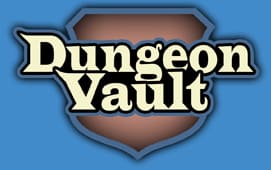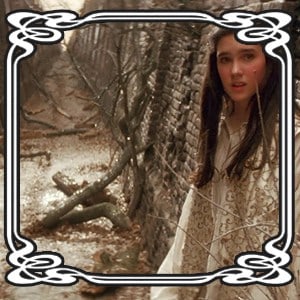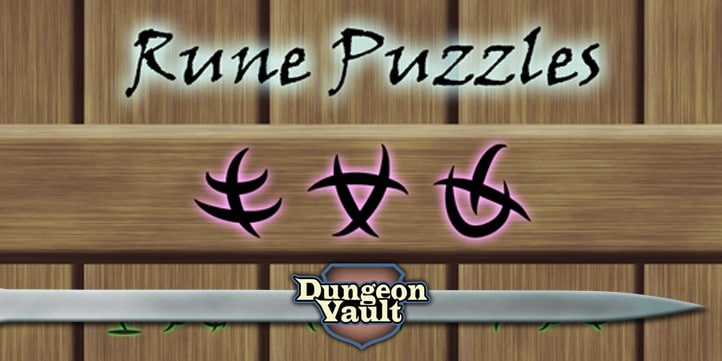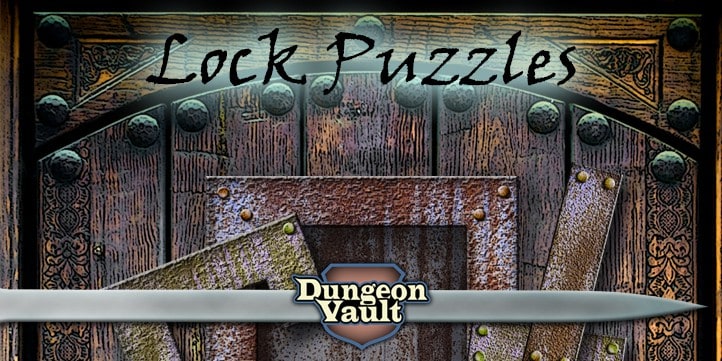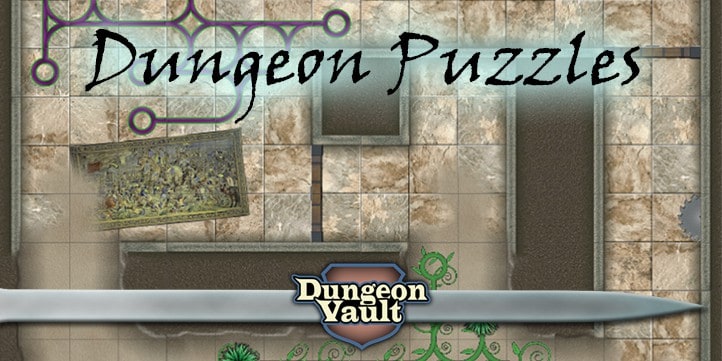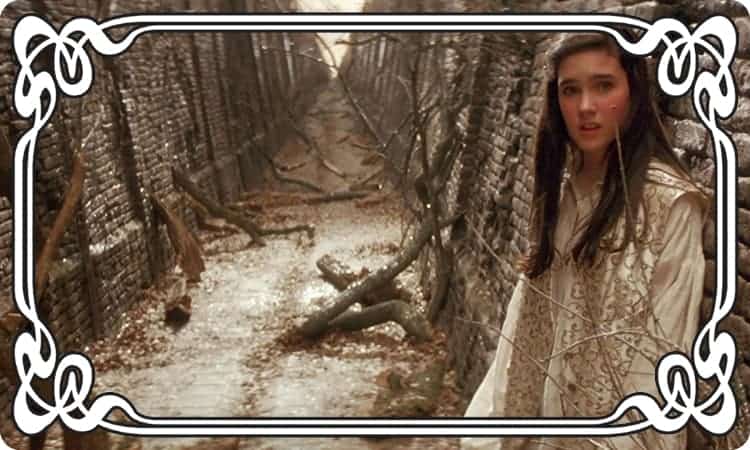
So you want to incorporate a maze or labyrinth puzzle into your D&D game. That is a great idea. Labyrinths and mazes are just perfect for puzzles. And there are a ton of options to consider. In this article I’ll illustrate the different ways you can use D&D puzzles in labyrinths or mazes. And I’ve included a free maze puzzle you can drop into your game. So why are mazes and labyrinths perfect for puzzles?
Having your D&D players navigate a maze literally puts them in the middle of a puzzle. Instead of only encountering puzzles along their way, the setting IS the puzzle. And if you combine the puzzle labyrinth with placing additional puzzles along their path, that is even better. Puzzles within puzzles, now there’s a challenge!
Updated on 12-23-2022 by Paul Camp
Choosing a D&D Labyrinth or Maze Puzzle That Works for You
In my survey of the best D&D puzzles according to players, maze puzzles scored average. I believe that’s because they are often not used to their full potential.
So first, let’s quickly discuss what doesn’t work. Do you know those mazes where there is one entrance, one correct route, and one exit? Those DO NOT work in Dungeons and Dragons. Here’s why.
Imagine it: It’s game night. You’ve printed up a labyrinth puzzle that only has one correct route and hand it out to the party. One player grabs the copy and starts tracing his finger along the correct path while the rest of the group grabs their phone and waits for the puzzle to be over. Not very entertaining.
Of course, you could decide not to give players a handout, and instead have them navigate the maze without seeing the whole thing. But where’s the puzzle challenge in that? If there is only one route then the whole thing just becomes an exercise in trial and error. There are no meaningful decisions to be made, no thought processes to follow other than ‘always keep to the left and you’ll exit eventually’. Having only one route to the exit feels like a giant railroad exercise to players.
Luckily, there are lots of ways to create a better labyrinth puzzle for your D&D game.
Designing a D&D Labyrinth or Maze Puzzle with Multiple Routes
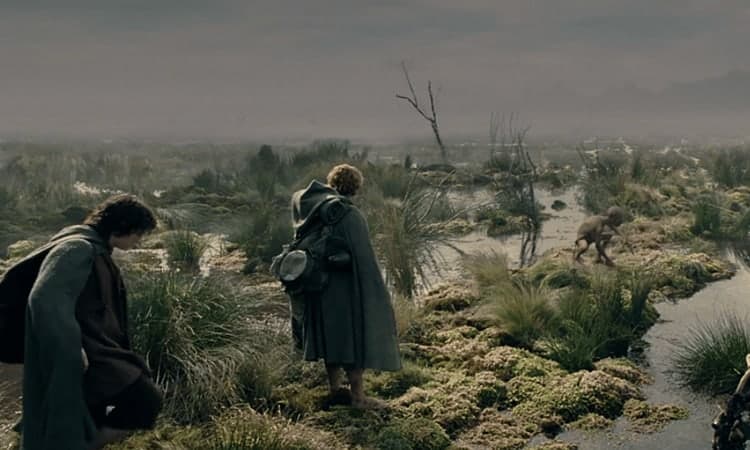
The first thing you want to do is create multiple pathways to the exit of the maze. This provides the players with choices. Next, you want to make those choices both challenging and meaningful. Do the players choose to go left past the Sleeping Ogres? Or do they veer right through the Living Library?
Each path gives the players some indication of the type of challenge they will face. This makes their choices meaningful. And if a challenge proves too difficult for them, they can always choose a different path. So having multiple routes to navigate the maze keeps your players from becoming stuck in the puzzle.
Designing a maze puzzle with multiple routes is easier than you might think. Just find a copy of a big single route maze online, and remove walls where you want to create additional paths. Next, place challenges along different routes, and add clues of what’s to come at intersections.
D&D Maze and Labyrinth Puzzles that Challenge Players and their Characters
Labyrinths put players in a mindset of using their wits and intelligence to find their path. Now some of you may be thinking: ‘But aren’t you challenging the players when you should be challenging their characters?’
To a degree the answer to that question is ‘Yes, you are challenging the players’. But how is that any different from any other challenge in D&D? In a combat challenge the character’s stats determine the chance an attack succeeds, but it is the player’s tactical decisions that keep a character alive. And in a social encounter the character’s charisma score determines his chances of success. But it’s the player who makes the tactical decision to reason with the dragon or try to seduce it.
In short: You want to challenge both the players AND their characters. The same is true for labyrinth and maze puzzles. Players can use their actual intelligence to figure stuff out, but you also want to incorporate intelligence checks.
But what if a character has very low intelligence? Does that mean he needs to sit back and let the wizard solve everything? No, it doesn’t. You can have a barbarian hold back a horde of goblins while the high intelligence characters solve a puzzle. Or have the rogue climb to a difficult to reach lever that has to be flipped in order to finish a puzzle. When designing puzzle challenges, don’t rely just on intelligence checks for hints, but give every character a chance to shine. An example:
“Doerak the Mighty and his fellowship enter the Living Library. A place most unfamiliar to the Barbarian. Of course, the feeble wizard, Laudius, would feel right at home and Stickyfingers the Deft is already eyeing the books looking for rare volumes to pinch.
Just when Doerak decides to let Laudius lead the way, his mighty ears pick up the sound of hundreds of feet echo through the hallways. ‘Goblins!’ They decide to make a run for it and Living Books start shushing them for making such a racket. The wizard seems to know where they are going though. But when they come to a very narrow hallway, Doerak decides to make a stand. ‘Go find a way out, while I hold them off!’
Laudius and Stickyfingers head into the next circular room where bookcases lining the walls rise a hundred feet high. Laudius inspects the room and finds a puzzle hidden in the floor connected to a trapdoor. Above the roar of Doerak fighting the goblins and a thousand books trying to shush him, Laudius yells: ‘Stickyfingers, I need that book on the top shelf to solve this puzzle!’ Stickyfingers looks up at the dangerous climb ahead and just nods to the Wizard before making his ascent.”
Hopefully, this short example shows how you can add all kinds of challenges to any maze puzzle. Laudius solves the puzzle, but it’s Doerak and Stickyfingers who make it possible. My point is: You can easily design labyrinth puzzles that have something for everyone, and do it in a way that challenges the players and their characters.
But that’s just one way to incorporate puzzles into your D&D maze. Here’s another one:
A Free D&D Maze Puzzle for Personal Use
As promised, here’s an example of a maze puzzle for D&D that you can drop into any campaign. This puzzle labyrinth setup doesn’t have any walls. And instead of giving the players a map to follow, they only get descriptions of places along the path.
For this puzzle, PCs must find their way through a swamp. PCs can only travel to where arrows point. If they stray from the path, they’ll end up in a random square or encounter a danger. Flying up to find their way doesn’t work because of a mist that doesn’t allow them to see very far. (Put a big flying monster above the maze if you don’t want them to just fly over and skip the puzzle).
After walking through the swamp for a while, players will soon realize they can map out the maze puzzle using your descriptions. If they don’t figure it out, they’ll wander through the swamp until they stumble upon the correct square, losing valuable time and resources. (This ensures they’ll never get stuck, but can still succeed without solving the puzzle at cost).

PCs enter the maze at square number one. Read out the description of that area. Here’s an example of descriptions you can use for each square in your puzzle:
1. A path winds between pools of stagnant water leading eastward and deeper into the Misty Swamp.
2. You come to a standing stone, its faces worn smooth by eons past. Only the symbol of an eye half closed is still recognizable. The path leads east, west, and southward.
3. The trail continues east and westward. A hundred pairs of yellow-winged blackbird’s eyes turn in your direction. Warily watching you from their perches on the limbs of a dead tree.
4. Westward and eastward the path winds. Between bushes with razor-sharp thorns.
5. At this corner in the path winding westward and southward, you find a deep lake. And something shimmers beneath its surface.
6. The path flows eastward and southward. A rotten shack stands at its corner but it hard to believe that someone would choose to live here.
7. The trail leads north, east and west. At the intersection lies a flat moss covered slab of stone.
8. A dead end. Not only does the path end here. You also find the remains of a pilgrim who must have gotten lost in these cursed lands.
9. At this bend in the path, leading south and east, you find a small altar. No mosquito will go near it.
10. The path leads north, south and west here. It is sturdier than in most places and the warm stones offer an opportunity to rest your feet.
11. Here the path runs north and south along a shallow pool where fish traps have been set up. But the ropes have long since rotten through.
12. Eastward and southward the trail leads, through a bank of fog that is particularly dense.
13. Soft lights are dancing above the path that leads north, south, and east.
14. Here the trail winds northward and westward between a cove of petrified trees.
15. In the middle of the intersection where the path leads north, south, and eastward, you hear the voices of children singing and an overwhelming need to take a nap. Just for a little while.
16. This intersection is made from sturdy worked stone. It arches over streams of water and leads north, south, and westward.
17. The path ends at the foot of a hill that seems unnaturally round.
18. A broken tower stands at these crossroads covered in creeping vines.
19. At this bend in the trail, leading west and south, you find a paw-print of something that is… bigger than you.
20. The path ends at a circular plateau covered in the bones of animals.
21. Another bend in the path leading north and eastward this time.
22. Here the path stretches east and westward. Large sections lie below the surface of the water. You will have to get your feet wet in order to cross.
23. At this bend in the road leading north and west the smell of rot is overwhelming.
24. The path ends in a cove of trees. Hammocks have been tied high between their branches.
You can use these descriptions or change them to suit your campaign and terrain. What I like about this maze puzzle is that it captures the feel of the swamp, giving lots of descriptions.
Maze or Labyrinth Puzzles as Your D&D Campaign Setting
As you can see from the examples of Doerak and the free maze puzzle; a labyrinth can quickly become a very immersive campaign setting where all paths are challenging. But the maze can also hide PCs from bigger dangers.
Frodo trying to find his way to Mordor through swamps and Moria is essentially one big challenging ‘maze world’ where the hobbits use the maze to hide from the Sauron’s everwachtful eye. And the movie ‘Labyrinth’ is literally that; a maze that encompasses an entire world. And what about The Wizard of Oz? Even though there are no walls, it is a big maze world in the sense that players won’t know where they are. The characters must follow the yellow brick railroad and the real adventure happens when they don’t.
While you can place any type of challenge within a D&D maze environment, putting puzzles within puzzles is even greater because it fits the theme. Let’s say the wizard Laudius is trying to solve a floor puzzle, but he needs to decipher a rune that’s in a book on the top shelf. Stickyfingers climbs up to get it and together they solve the puzzle and open the door, escaping the horde of goblins. But the adventure doesn’t end there. Not soon after Doerak finds a magical axe that is inlaid with the same runes. And with the help of Laudius he manages to solve that puzzle and unleash the magical powers of the axe.
By putting more puzzles into your D&D maze puzzle campaign setting, you can keep adding extra layers of depth to your world. One thing that Middle-earth, Labyrinth and the Land of Oz have in common is that it feels like the world itself is a character in the story. And that’s because these worlds demand something from players through the use of puzzles.
But what puzzles can you best use to create such a world? Here are a few puzzles that I’ve designed and used in this type of setup that work really well.
Rune puzzles is one of my most versatile puzzle packs. It contains 30 rune words that you can drop onto any object. If you want to lock treasure chests, maps, doors, portals, or even magical items. You just drop a rune puzzle on it and you’re done.
Players have to find all the clues to translating the runes first. Next they have to solve an anagram, and then figure out the cryptic description of an object. Touch that object to the rune word and the puzzle is solved.
Of course, you still have to justify the rune words existence. There are a ton of options. Maybe a wizard put it there believing nobody would be intelligent enough to figure out the runes. Or puzzle-loving fey placed the puzzle there. A holy order might have placed the puzzle so only the wise and worthy could solve it. And so on. You can use whatever story fits your adventure.
The pack contains both a print out version and images with transparency for virtual tabletop play. If you print out the runes, you can draw an image behind them. If you use the images with transparency, you can layer them to look like the rune are etched into the object.
Lock Puzzles are another pack of puzzles that you can very easily integrate with any D&D maze. You drop a series of puzzle frames onto an object. Filling out one frame with puzzle pieces is usually very easy. But filling out all frames simultaneously, is increasingly hard. With just nine puzzle frames, you can create over 500 different puzzles. More than you will need in any puzzle adventure.
With Dungeon Puzzles your entire dungeon is transformed into a puzzle. Players have to rotate puzzle pieces in their place so that all pieces connect and there are no loose ends. Usually players will start at the edges because the orientation of the pieces can only be in one direction. Next, they connect other pieces to the outer layer until they’ve solved the puzzle. The cool thing about this puzzle is that players can immediately use the puzzle for a dungeon map once they’ve solved it. So your game naturally flows from solving the puzzle into exploring the dungeon.

With Wilderness Puzzles, instead of laying out a dungeon, players must lay out a piece of wilderness. It is a very different puzzle system. And once the puzzle is completed, you can use it as terrain for a combat encounter. A perfect addition to any D&D maze.

The Vault Bundle contains all the puzzle packs on this website and much more. You’ll get more than enough puzzles to fill out any campaign. It also contains the Murder in the Monastery puzzle adventure which is compatible with D&D. For a full overview of everything that is in the Vault Bundle click here.
By: Paul Camp
Image credit: Labyrinth, Lord of the Rings
